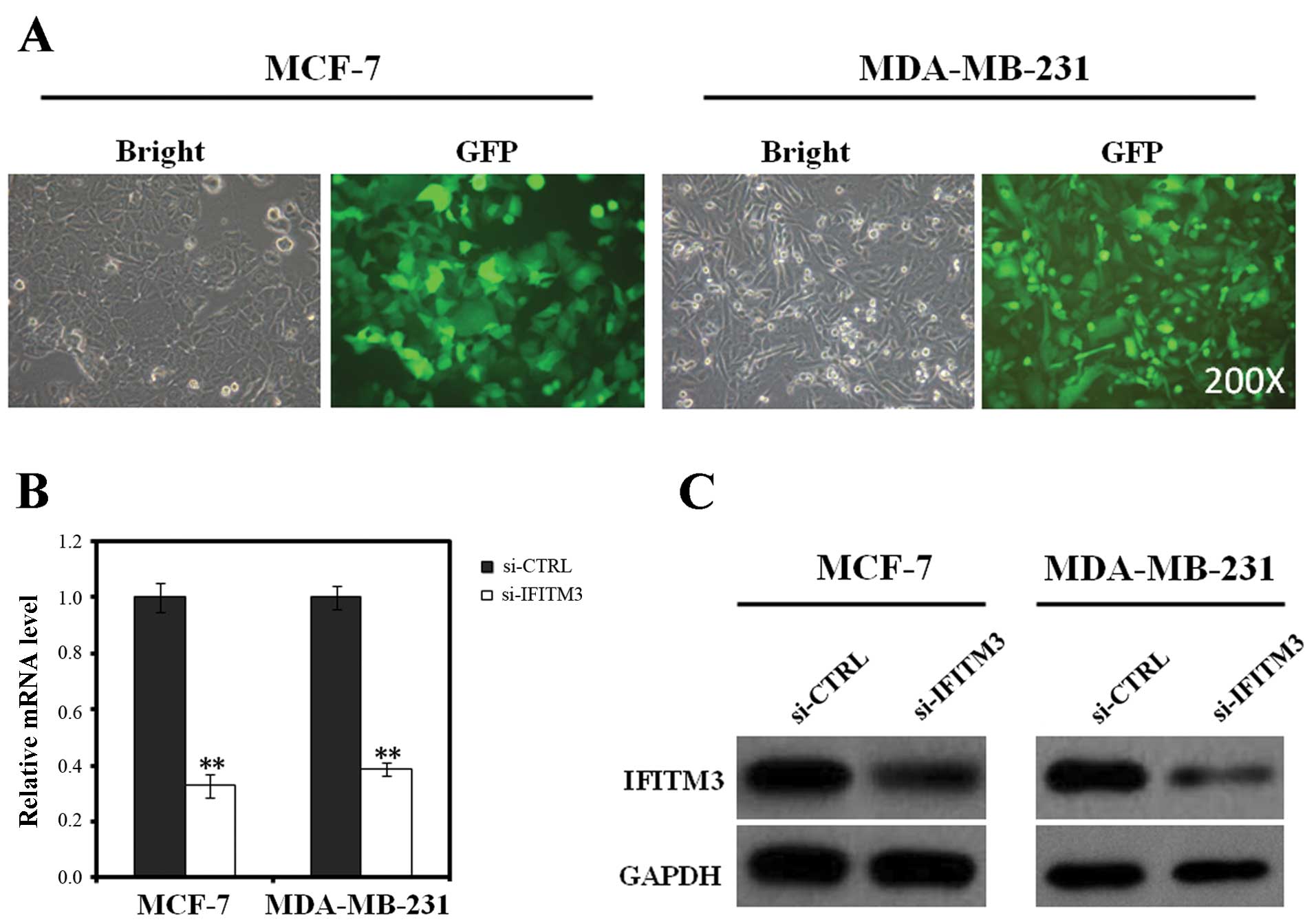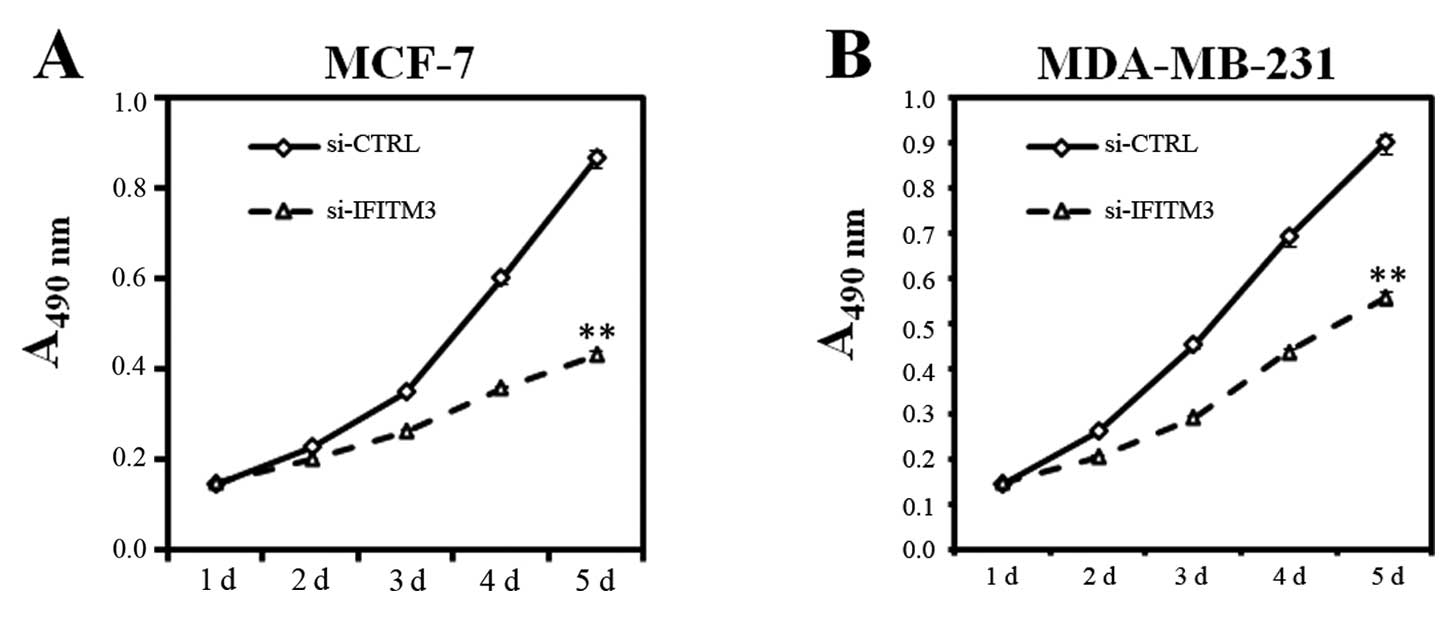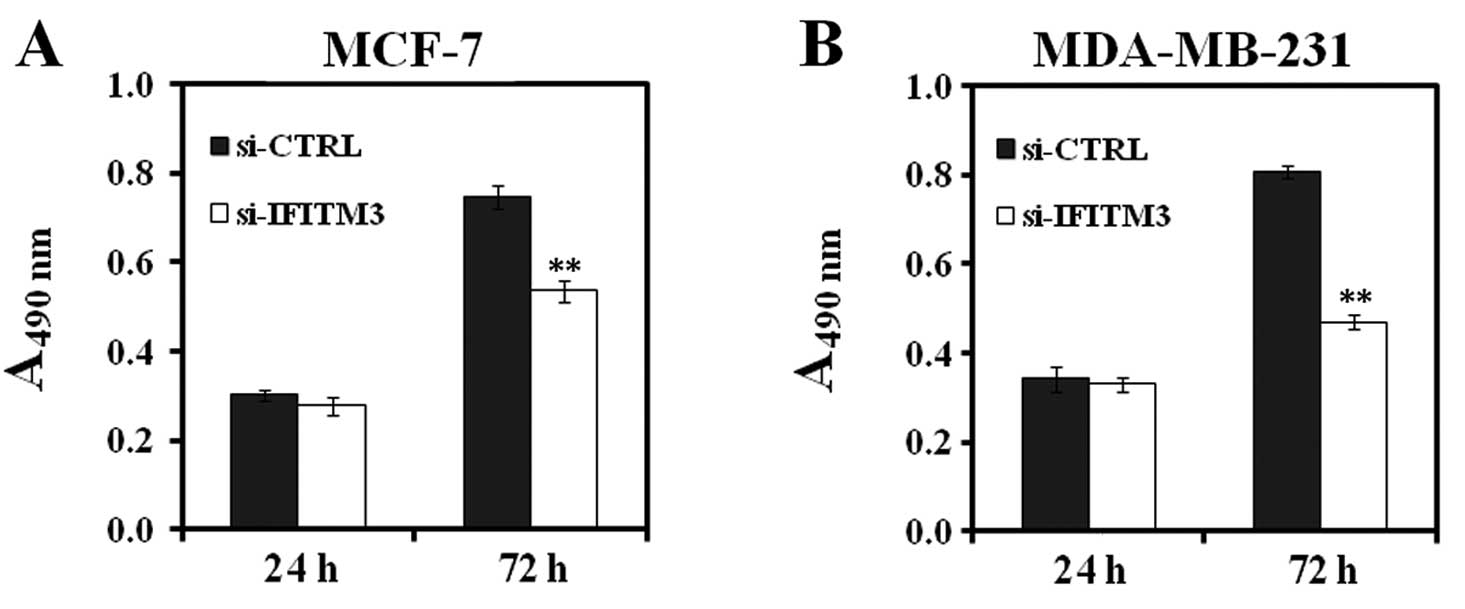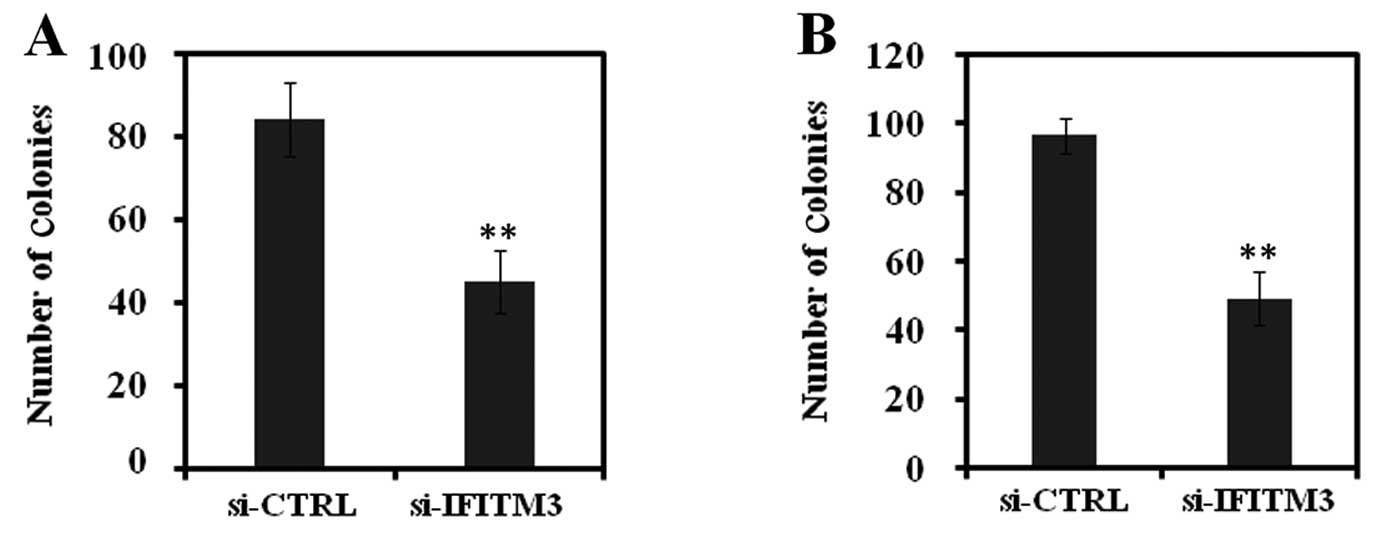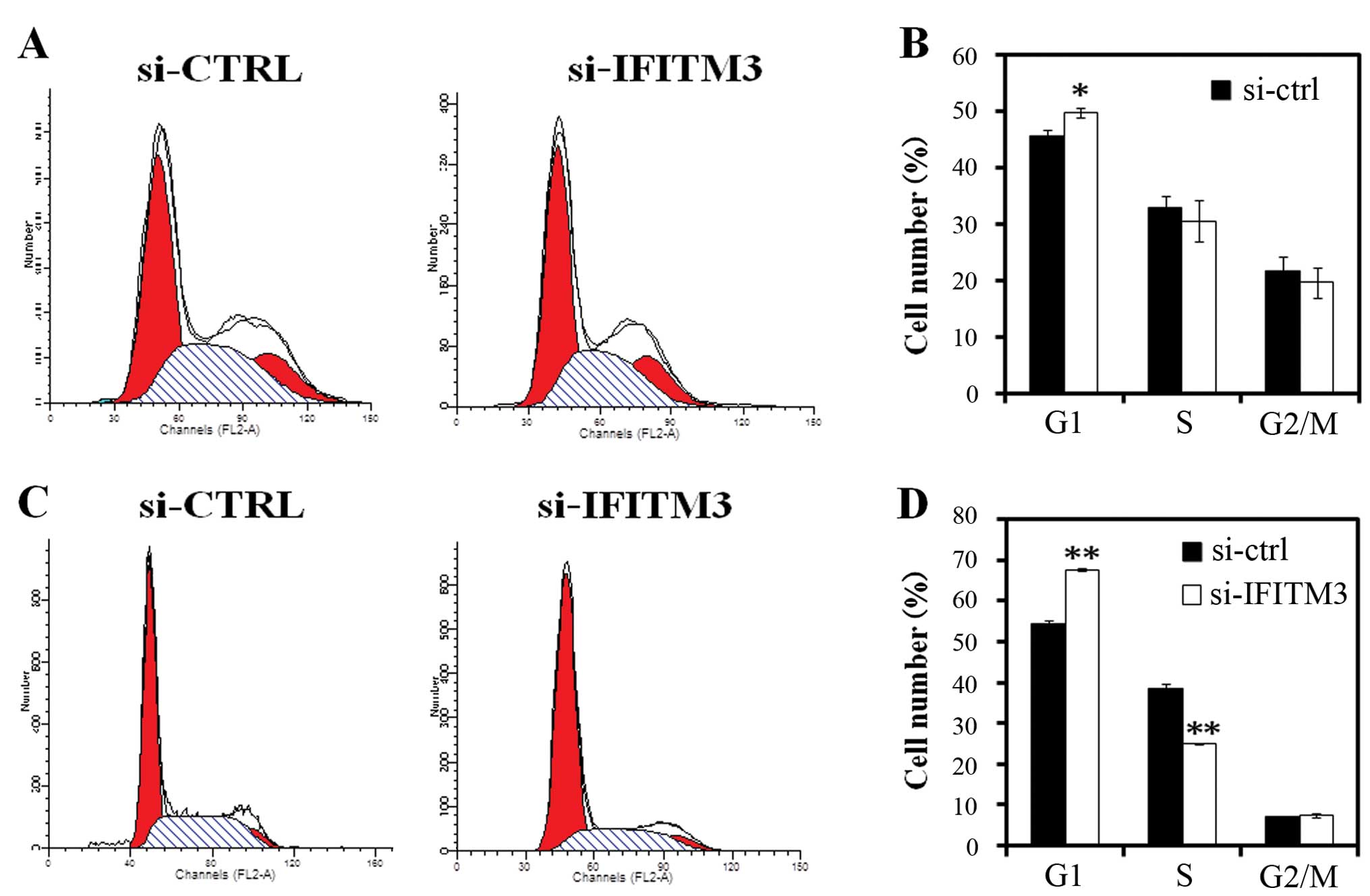|
1
|
Jemal A, Siegel R, Xu J and Ward E: Cancer
statistics, 2010. CA Cancer J Clin. 60:277–300. 2010. View Article : Google Scholar
|
|
2
|
Greenlee RT, Murray T, Bolden S and Wingo
PA: Cancer statistics. CA Cancer J Clin. 50:7–33. 2000.
|
|
3
|
Charpentier A and Aldaz CM: The molecular
basis of breast carcinogenesis. The Molecular Basis of Human
Cancer. Coleman WB, Tsongalis GJ and Totowa NJ: Human Press; New
Jersey: pp. 347–363. 2002, View Article : Google Scholar
|
|
4
|
Moffatt P, Gaumond MH, Salois P, et al:
Bril: a novel bone-specific modulator of mineralization. J Bone
Miner Res. 23:1497–1508. 2008. View Article : Google Scholar : PubMed/NCBI
|
|
5
|
Hickford D, Frankenberg S, Shaw G and
Renfree MB: Evolution of vertebrate interferon inducible
transmembrane proteins. BMC Genomics. 13:1552012. View Article : Google Scholar : PubMed/NCBI
|
|
6
|
Reid LE, Brasnett AH, Gilbert CS, et al: A
single DNA response element can confer inducibility by both α- and
γ-interferons. Proc Natl Acad Sci USA. 86:840–844. 1989.
|
|
7
|
Friedman RL, Manly SP, McMahon M, Kerr IM
and Stark GR: Transcriptional and post-transcriptional regulation
of interferon-induced gene expression in human cells. Cell.
38:745–755. 1984. View Article : Google Scholar : PubMed/NCBI
|
|
8
|
Lu J, Pan Q, Rong L, He W, Liu SL and
Liang C: The IFITM proteins inhibit HIV-1 infection. J Virol.
85:2126–2137. 2011. View Article : Google Scholar : PubMed/NCBI
|
|
9
|
Saitou M, Payer B, Lange UC, Erhardt S,
Barton SC and Surani MA: Specification of germ cell fate in mice.
Philos Trans R Soc Lond B BiolSci. 358:1363–1370. 2003. View Article : Google Scholar : PubMed/NCBI
|
|
10
|
Andreu P, Colnot S, Godard C, et al:
Identification of the IFITM family as a new molecular marker in
human colorectal tumors. Cancer Res. 66:1949–1955. 2006. View Article : Google Scholar : PubMed/NCBI
|
|
11
|
Siegrist F, Ebeling M and Certa U: The
small interferon-induced transmembrane genes and proteins. J
Interferon Cytokine Res. 31:183–197. 2011. View Article : Google Scholar : PubMed/NCBI
|
|
12
|
Wang Y, Peng H, Zhong Y, et al:
Differential gene expression profiling of human epidermal growth
factor receptor 2-overexpressing mammary tumor. Acta Biochim
Biophys Sin. 40:397–405. 2008. View Article : Google Scholar : PubMed/NCBI
|
|
13
|
Tanaka SS, Nagamatsu G, Tokitake Y, Kasa
M, Tam PP and Matsui Y: Regulation of expression of mouse
interferon-induced transmembrane protein like gene-3, Ifitm3
(mil-1, fragilis), in germ cells. Dev Dyn. 230:651–659. 2004.
View Article : Google Scholar : PubMed/NCBI
|
|
14
|
Smith RA, Yong J, Weis JJ and Weis JH:
Expression of the mouse fragilis gene products in immune cells and
association with receptor signaling complexes. Genes Immun.
7:113–121. 2006. View Article : Google Scholar : PubMed/NCBI
|
|
15
|
Brem R, Oraszlan-Szovik K, Foser S,
Bohrmann B and Certa U: Inhibition of proliferation by 1-8U in
interferon-alpha-responsive and nonresponsive cell lines. Cell Mol
Life Sci. 60:1235–1248. 2003.PubMed/NCBI
|
|
16
|
Lau SL, Yuen ML, Kou CY, Au KW, Zhou J and
Tsui SK: Interferons induce the expression of IFITM1 and IFITM3 and
suppress the proliferation of rat neonatal cardiomyocytes. J Cell
Biochem. 113:841–847. 2012. View Article : Google Scholar : PubMed/NCBI
|
|
17
|
Yang Y, Lee JH, Kim KY, et al: The
interferon-inducible 9-27 gene modulates the susceptibility to
natural killer cells and the invasiveness of gastric cancer cells.
Cancer Lett. 221:191–200. 2005. View Article : Google Scholar : PubMed/NCBI
|
|
18
|
Hatano H, Kudo Y, Ogawa I, et al:
IFN-induced transmembrane protein 1 promotes invasion at early
stage of head and neck cancer progression. Clin Cancer Res.
14:6097–6105. 2008. View Article : Google Scholar : PubMed/NCBI
|
|
19
|
Singletary SE, Allred C, Ashley P, et al:
Revision of the American Joint Committee on cancer staging system
for breast cancer. J Clin Oncol. 20:3628–3636. 2002. View Article : Google Scholar : PubMed/NCBI
|
|
20
|
Federico Maurizio: Lentivirus Gene
Engineering Protocols (Methods in Molecular Biology). Humana Press;
1 edition. April 30–2003, View Article : Google Scholar
|
|
21
|
Sakoda T, Kasahara N, Hamamori Y and Kedes
L: A high-titer lentiviral production system mediates efficient
transduction of differentiated cells including beating cardiac
myocytes. J Mol Cell Cardiol. 31:2037–2047. 1999. View Article : Google Scholar
|
|
22
|
Soneoka Y, Cannon PM, Ramsdale EE, et al:
A transient three-plasmid expression system for the production of
high titer retroviral vectors. Nucleic Acids Res. 23:628–633. 1995.
View Article : Google Scholar : PubMed/NCBI
|
|
23
|
Pfaffl MW, Horgan GW and Dempfle L:
Relative expression software tool (REST) for group-wise comparison
and statistical analysis of relative expression results in
real-time PCR. Nucleic Acids Res. 30:e362002. View Article : Google Scholar : PubMed/NCBI
|
|
24
|
Brass AL, Huang IC, Benita Y, et al: IFITM
proteins mediate the innate immune response to influenza A H1N1
virus, West Nile virus and Dengue virus. Cell. 139:1243–1254. 2009.
View Article : Google Scholar : PubMed/NCBI
|
|
25
|
Huang IC, Bailey CC, Weyer JL, et al:
Distinct patterns of IFITM-mediated restriction of filoviruses,
SARS coronavirus, and influenza A virus. PLoS Pathog.
7:e10012582011. View Article : Google Scholar : PubMed/NCBI
|
|
26
|
Abba MC, Drake JA, Hawkins KA, et al:
Transcriptomic changes in human breast cancer progression as
determined by serial analysis of gene expression. Breast Cancer
Res. 6:R499–R513. 2004. View
Article : Google Scholar : PubMed/NCBI
|
|
27
|
Wang Y, Holland JF, Bleiweiss IK, Melana
SM, Xu D and Pogo BGT: Detection of mammary tumor virus env
gene-like sequences in human breast cancer. Cancer Res.
55:5173–5179. 1995.PubMed/NCBI
|
|
28
|
Ford CE, Tran D, Deng YM, Ta VT, Rawlinson
WD and Lawson JS: Mouse mammary tumor virus-like gene sequences in
breast tumors of Australian and Vietnamese women. Clin Cancer Res.
9:1118–1120. 2003.
|
|
29
|
Fernandez-Cobo M, Melana SM, Holland JF
and Pogo BG: Transcription profile of a human breast cancer cell
line expressing MMTV-like sequences. Infect Agent Cancer. 1:72006.
View Article : Google Scholar : PubMed/NCBI
|
|
30
|
Khan SA, Rogers MA, Khurana KK, Meguid MM
and Numann PJ: Estrogen receptor expression in benign breast
epithelium and breast cancer risk. J Natl Cancer Inst. 90:37–42.
1998. View Article : Google Scholar : PubMed/NCBI
|
|
31
|
Ricketts D, Turnbull L, Ryall G, et al:
Estrogen and progesterone receptors in the normal female breast.
Cancer Res. 51:1817–1822. 1991.PubMed/NCBI
|
|
32
|
Moy B and Goss PE: Estrogen receptor
pathway: resistance to endocrine therapy and new therapeutic
approaches. Clin Cancer Res. 12:4790–4793. 2006. View Article : Google Scholar : PubMed/NCBI
|




